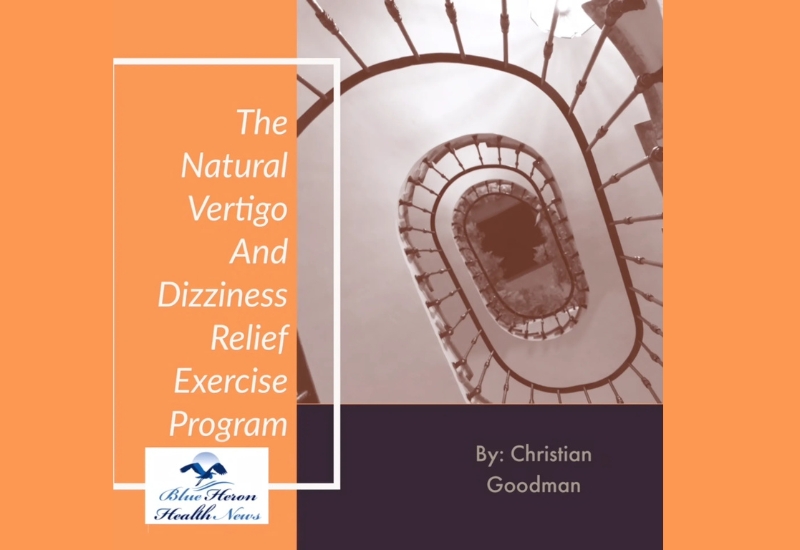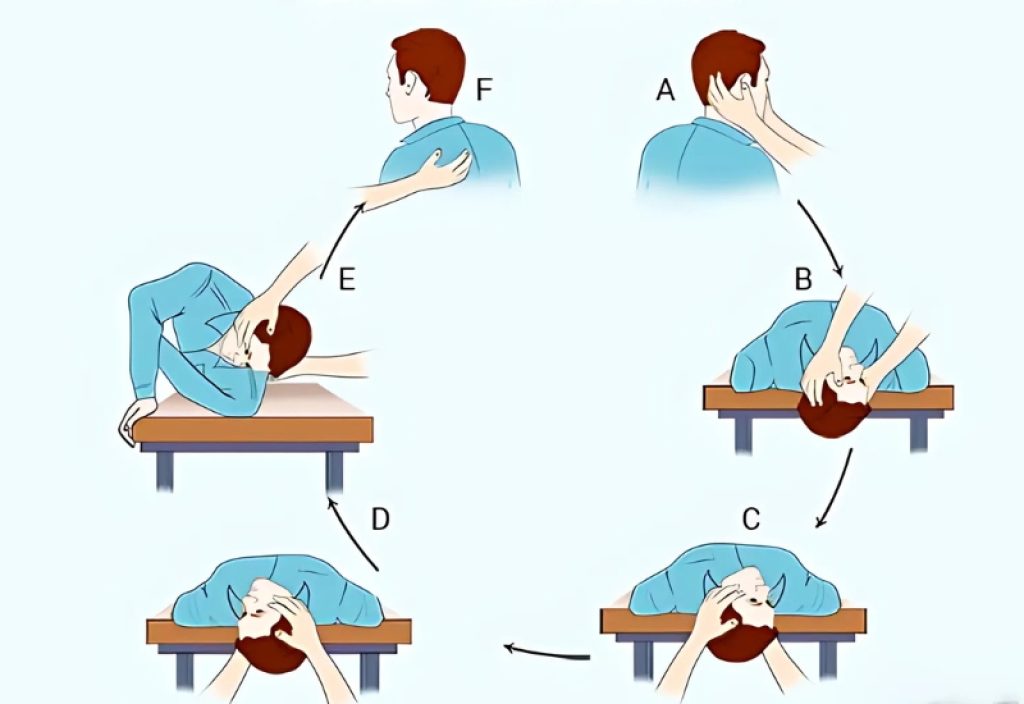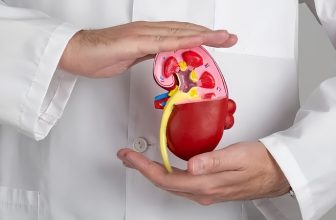Vertigo and Dizziness Program Reviews – Is It Worth Buying?

Vertigo and dizziness are two of the most common symptoms that many individuals worldwide struggle with on a daily basis. They not only cause significant discomfort but also affect quality of life by limiting one’s ability to perform regular activities. If left untreated, these conditions can lead to severe health issues, including frequent falls and a negative impact on mental health.
The Vertigo and Dizziness Program is designed as a therapeutic solution for those experiencing these symptoms. This program aims to address the underlying causes of vertigo and dizziness through a holistic approach, including exercises, education, and lifestyle adjustments. This article will provide an in-depth look at the Vertigo and Dizziness Program, its key components, benefits, and whether it’s worth your investment.

What is the Vertigo and Dizziness Program?
The Vertigo and Dizziness Program is a specialized treatment plan designed to diagnose, manage, and treat vertigo, dizziness, and balance disorders. The root causes of these issues can vary, including inner ear problems, vestibular dysfunction, neck-related issues, or even neurological disorders. The program aims to offer an effective solution by combining different therapies and techniques.
The program includes several key components:
- Assessment and Diagnosis: The program begins with an in-depth assessment conducted by healthcare professionals, such as vestibular specialists, audiologists, or neurologists. This helps determine the specific cause of the symptoms and guides the creation of a personalized treatment plan.
- Vestibular Rehabilitation Therapy (VRT): The program incorporates specialized exercises aimed at retraining the brain to compensate for balance-related issues. Vestibular rehabilitation therapy is a proven method for treating inner ear dysfunction, which is often a significant cause of vertigo and dizziness.
- Balance and Gait Training: To enhance stability and reduce dizziness, the program includes exercises that focus on improving balance and gait. These exercises help to strengthen the muscles involved in maintaining stability and reduce the risk of falls.
- Manual Therapy: For those experiencing cervical vertigo (dizziness caused by neck problems), manual therapy is included. This therapy involves gentle movements of the head and neck to alleviate symptoms.
- Patient Education: Education is a crucial aspect of the program. Patients receive information about their condition, self-care strategies, lifestyle modifications, and at-home exercises to manage their symptoms independently.
- Medication if Necessary: In some cases, medication may be prescribed to provide quick symptom relief while other therapeutic methods take effect.

The ultimate goal of the Vertigo and Dizziness Program is to reduce the frequency and severity of vertigo episodes, improve overall balance, and help patients regain their confidence and mobility in their daily lives.
How Does the Vertigo and Dizziness Program Work?
The Vertigo and Dizziness Program works by targeting the root causes of vertigo and dizziness through structured exercises, self-guided techniques, and educational components. These exercises and strategies are specifically designed to retrain the brain and body to respond better to balance-related challenges, ultimately helping to reduce symptoms and improve quality of life.
Key Mechanisms of the Program:
- Vestibular Rehabilitation: One of the main approaches used in the program is vestibular rehabilitation therapy. This therapy involves a series of exercises focusing on head and eye movements. The purpose of these exercises is to stimulate and strengthen the vestibular system, which includes the inner ear and helps maintain balance. By improving vestibular function, the brain can adapt more effectively to dizziness and recalibrate the sense of balance.
- Balance and Gait Exercises: The program also includes exercises specifically aimed at improving coordination, stability, and body awareness. These exercises help enhance overall balance, reduce the risk of falls, and build the patient’s confidence when performing everyday activities.
- Symptom-Based Customization: The program provides tailored routines based on the severity of symptoms. Users can begin at a comfortable level that is manageable and gradually increase the intensity as they become more accustomed to the exercises. This individualized approach helps ensure safety and effectiveness.
- Neuroplasticity: The program encourages neuroplasticity—the brain’s ability to adapt and reorganize itself. Neuroplasticity plays a key role in helping the body manage balance-related challenges by forming new neural connections and enhancing the brain’s ability to compensate for any vestibular deficiencies.
The structured and progressive nature of the program helps users gradually improve their tolerance to balance-related issues, ultimately reducing vertigo episodes and enhancing their quality of life.

What is Included in the Vertigo and Dizziness Program?
The Vertigo and Dizziness Program includes a comprehensive set of resources and tools that are designed to alleviate vertigo and dizziness symptoms through targeted exercises and guidance. Here is an overview of what is typically included in the program:
- Comprehensive Instructional Guide: The program provides a detailed guide that explains the causes of vertigo and dizziness, how the program’s techniques work, and how users can effectively apply them to manage their symptoms.
- Step-by-Step Exercises: The program includes a series of structured exercises that focus on retraining the vestibular system. These exercises are intended to improve balance, reduce dizziness, and help the brain and body better handle positional changes.
- Personalized Protocols: Customized routines are provided based on the user’s symptom severity. This ensures that each participant can begin at an appropriate level and progress over time as their balance and tolerance improve.
- Progress Tracking Tools: Tracking tools such as guidelines, charts, or a progress diary are included to help users monitor their improvements. This helps users adjust the program based on their progress and focus on the areas that need more attention.
- Self-Management Tips: In addition to exercises, the program includes practical tips for managing symptoms throughout daily life. These self-management strategies offer guidance on how to handle vertigo episodes and minimize triggers.
Benefits of Using the Vertigo and Dizziness Program
- Symptom Relief: The primary benefit of using the Vertigo and Dizziness Program is that it helps reduce the frequency and severity of vertigo and dizziness episodes.
- Improved Balance: The program is designed to improve the user’s sense of balance, which can significantly enhance stability and help prevent falls, especially for older adults.
- Increased Confidence: By addressing the root causes of dizziness and reducing the fear of sudden vertigo, users often regain their confidence in performing daily activities.
- Long-Term Self-Management: The program empowers users to take control of their symptoms through self-guided exercises and techniques, making them less reliant on medications or frequent medical appointments.
- Non-Invasive and Safe: Unlike many other treatments, the program is non-invasive and uses physical exercises and lifestyle adjustments rather than medications or surgeries. This makes it a safe and natural option for most individuals.
Pros and Cons of the Vertigo and Dizziness Program
Pros:
- Easy to Follow: The exercises and instructions are simple and easy to understand, making them suitable for beginners.
- Affordable: The program costs $55 as a one-time fee, making it a budget-friendly alternative to ongoing medical treatments.
- Customizable: The program’s intensity can be adjusted based on individual progress, ensuring users are always working at a level that suits them.
- Home-Based: All exercises can be done at home, which is especially beneficial for those with mobility issues or who prefer the convenience of self-guided care.
- Proven Techniques: The program uses well-established vestibular rehabilitation techniques that are widely recognized for their effectiveness in managing balance disorders.
Cons:
- Requires Consistency: The effectiveness of the program depends heavily on the user’s commitment to regular practice. Results are not immediate, and consistency is key.
- Not Suitable for Severe Cases: Individuals with severe underlying conditions or those requiring immediate medical intervention may not find full relief with this program alone and may require additional medical care.
- Gradual Results: The program focuses on long-term improvement, so those looking for quick symptom relief may be disappointed with the pace of progress.

How to Use the Vertigo and Dizziness Program Effectively
To make the most out of the Vertigo and Dizziness Program, it’s important to follow these steps closely:
- Read the Comprehensive Guide: Start by thoroughly reading the instructional guide provided with the program. This will help you understand how the exercises work, why they’re important, and how they can help you manage your symptoms.
- Begin with Step-by-Step Exercises: Start with the initial set of exercises as outlined in the guide. These exercises will help retrain your balance system and brain. It is important to start at a level that is comfortable and gradually progress as your confidence grows.
- Customize the Program Based on Your Symptoms: If your symptoms are severe, begin with lower-intensity exercises. As you start seeing progress, you can gradually increase the intensity and challenge yourself further.
- Practice Consistently: Consistency is crucial when it comes to improving vertigo and dizziness symptoms. Aim to practice the exercises daily, or as instructed in the program, to see the best results.
- Track Your Progress: Use the tracking tools provided, or keep a diary to note any improvements in your symptoms. Tracking your progress will help you stay motivated and identify which exercises are most effective for you.
- Apply Self-Management Tips: Beyond exercises, make sure to use the self-management tips to help you handle triggers and prevent episodes throughout your day-to-day life.
Conclusion
The Vertigo and Dizziness Program is a structured and effective approach for individuals seeking relief from vertigo and dizziness. By focusing on vestibular rehabilitation, balance training, and practical self-management strategies, this program provides users with the tools they need to regain control over their symptoms and improve their quality of life.
With an affordable one-time cost, customizable routines, and a non-invasive approach, the Vertigo and Dizziness Program offers a viable solution for anyone looking to reduce the frequency and severity of vertigo episodes. If you’re tired of dealing with dizziness and want to take control of your health, this program may be worth trying.
Get Started Today!











